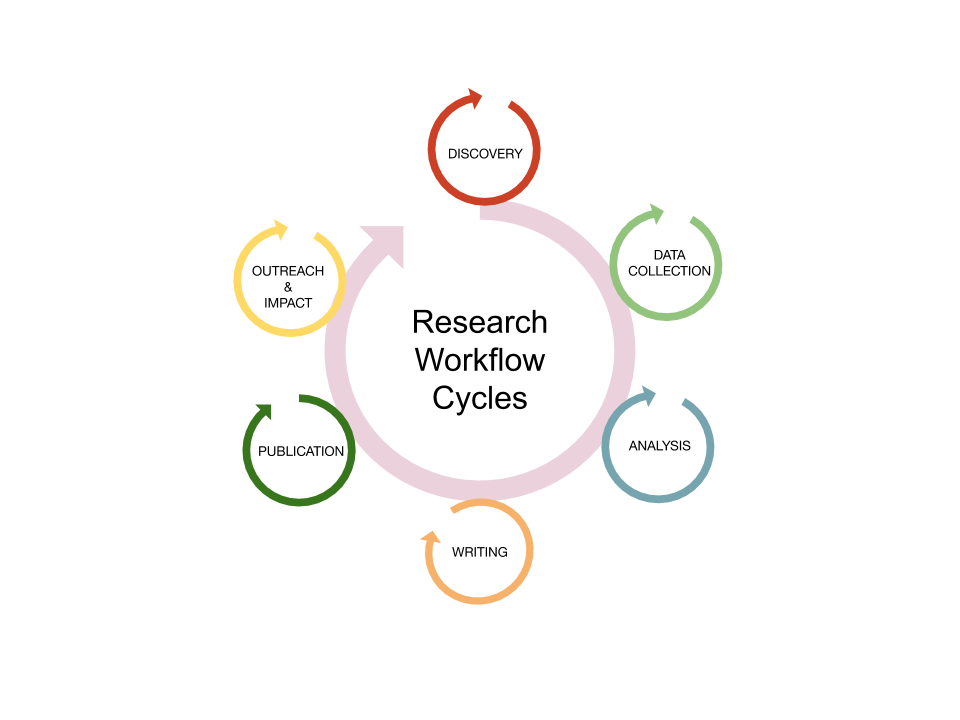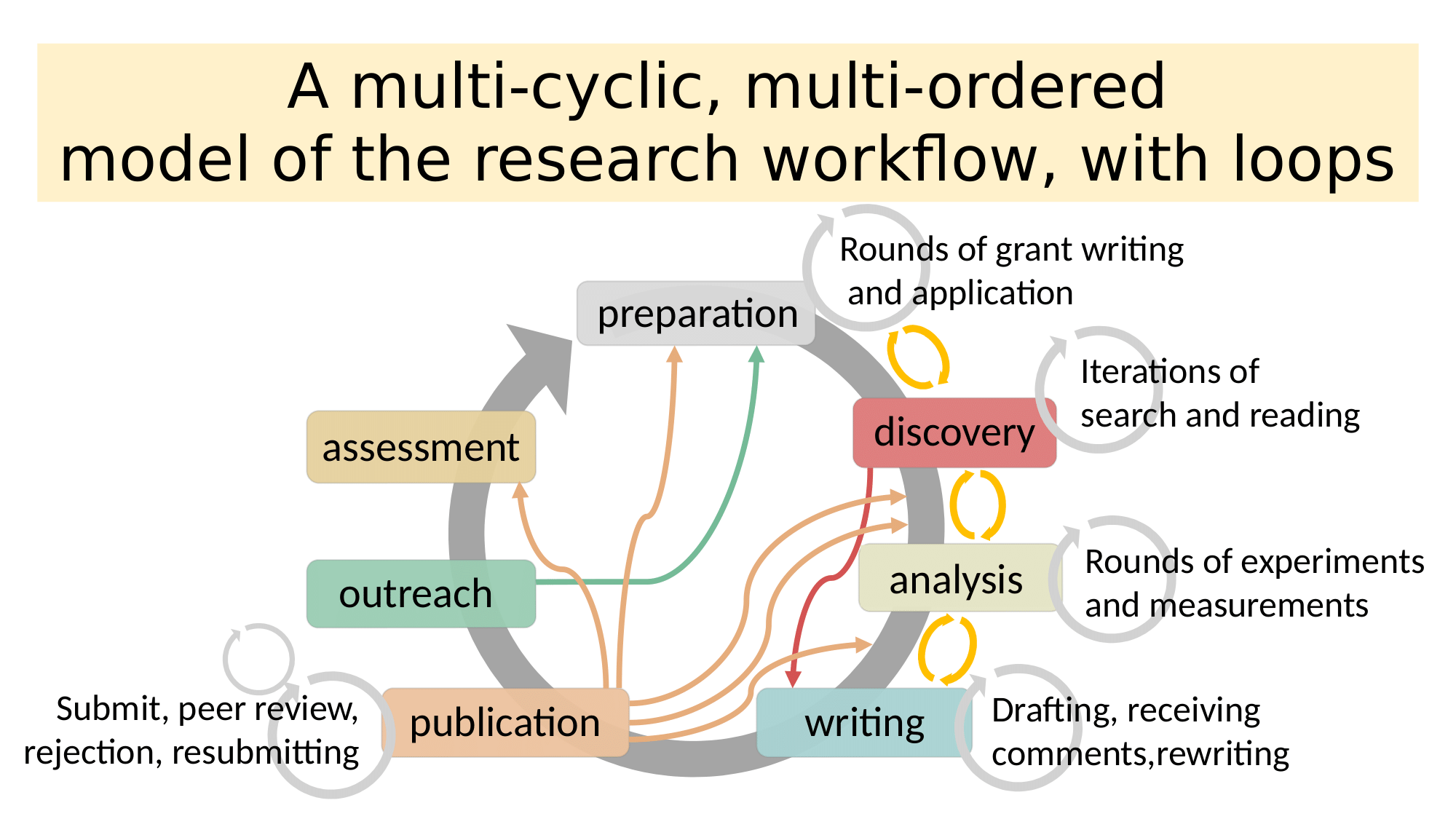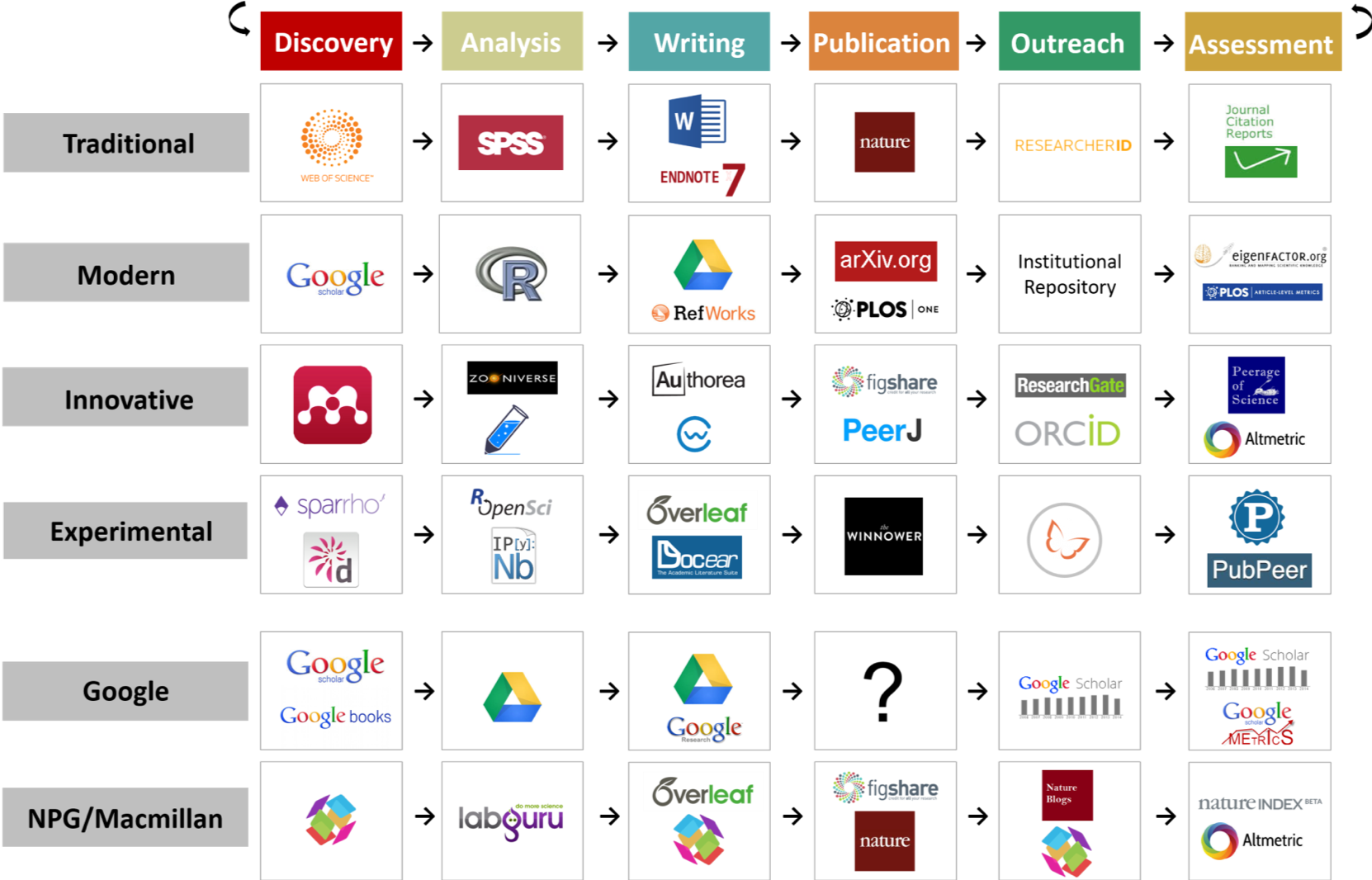Chemistry: Advanced Research Skills: Home
Introduction
This guide describes how to find, manage, and organize information for students pursing an advanced chemistry degree. It is a supplement to the main Chemistry Resource Guide, which provides links to all the major databases and other library resources.
- Research Workflows
- Chemistry Research Guides @ UB Libraries
Research Workflows
It may be helpful to think of your research process as a workflow or cycle composed of smaller iterative cycles nested within your broader approach. Figure 1 is an example of a basic, simplified model - note the circular movement from the initial discovery process (including idea generation and searching for information), to data collection, analysis, writing up results, publication, and lastly a consideration of outreach and impact of the work.
Fig. 1 Basic Research Workflow
However, real workflows are never this simple. Figure 2 shows an example of more complex, iterative model [1]. You can see how multiple cycles nest within the larger cycle as each aspect of the workflow requires revisions, edits, clarifying experiments, etc.
Fig. 2 Multicycle Workflow
Here is an even more realistic view of what your day to day workflow might look like, which was created by Thomas Van Hoey, a graduate student in linguistics. Van Hoey took an honest look at his own workflow, which is probably a better representation of how most of us get through the day [2].
Fig. 3 Honest Workflow
A workflow does not exist on its own, but is made of choices - which software, applications and products to use; how do they work together effectively; how open and reproducible are they; and what makes sense for a given task, subject domain or project. The following image comes from Bosman and Kramer’s 2016 survey [1] of 20,000 researchers worldwide to give you a sense of how products sync to comprise a hypothetical workflow.
Fig. 4 Hypothetical Workflows
As you begin to research, your personal choices will dictate your workflow. These illustrations are meant to demonstrate the variety of ways that research can, and does, occur. Please feel free to contact your librarian (Amanda McCormick) with questions at any time.
Bibliography: [1](1,2) Jeroen Bosman and Bianca Kramer. Of shapes and style: visualising innovations in scholarly communication. June 2016. doi:10.6084/m9.figshare.3468641.v1. | [2] Thomas Van Hoey. Handling Research (Academic Workflow 2). June 2020. URL: https://www.thomasvanhoey.com/posts/2024-10-28-handling-research-academic-workflow-2/index.html.
-
Source: Many thanks to the librarians at UC Berkley for this excellent tutorial (modified, used with permission per CC BY-NC 4.0 license).
Productivity

Source: https://xkcd.com/1445/
The Nine Best Articles on Productivity in Research were compiled by Medium. Summarized:
(1) Set Aside Time for Reading;
(2) Read Often; and
(3) Use Reference Management Software to Save and Organize Your Research.



